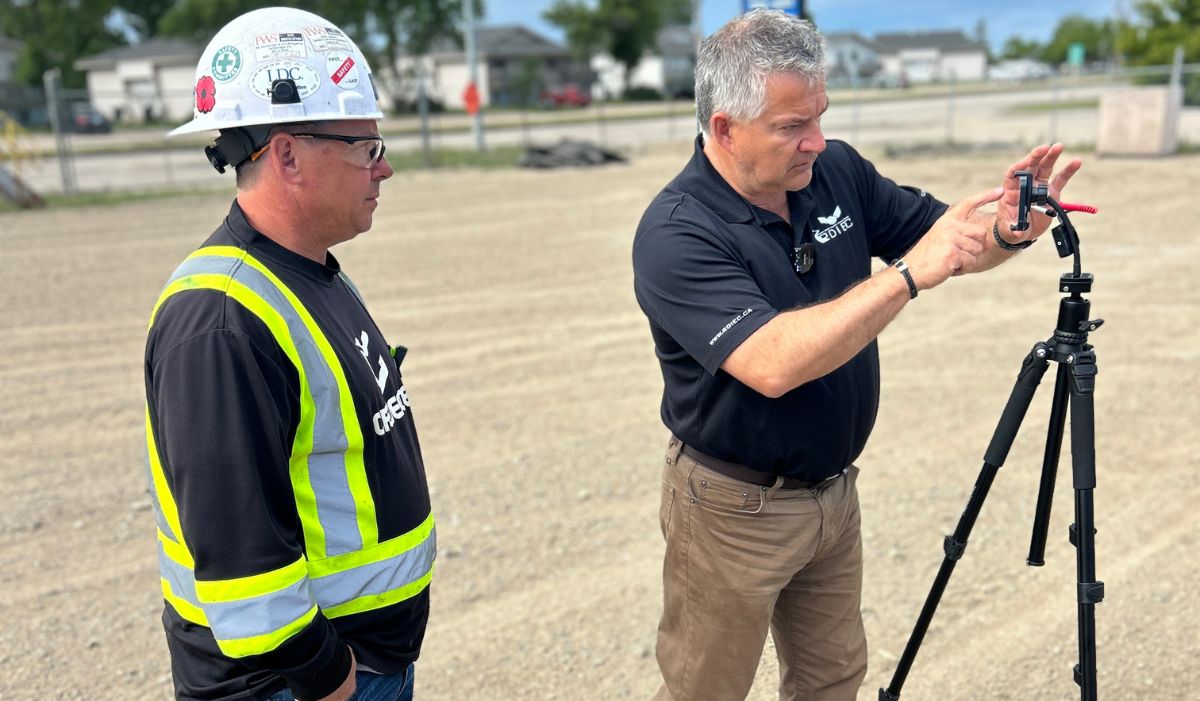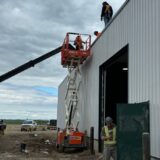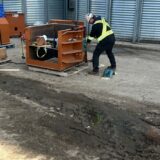3D Laser Scanning for Structural Steel Inspection in Canada
If you’ve ever managed a steel project, you know how much precision matters. A beam that’s a few millimetres off can slow down installation, throw off connections, or even affect safety. Across Canada, more builders are solving that problem with 3D laser scanning for structural steel inspection — a method that replaces guesswork with hard data.
What 3D Laser Scanning Actually Does
Think of 3D laser scanning as a digital tape measure that never blinks. It uses laser light to record millions of surface points in seconds, capturing the exact shape and location of every piece of steel. The result is a dense “point cloud,” which engineers turn into a detailed 3D model.
Instead of climbing ladders or stretching a tape across beams, inspectors can walk the site once with the scanner. Back in the office, the model shows whether the steel aligns perfectly with the design drawings or needs adjustment before the next step begins.
Why Canadian Construction Teams Rely on It
Traditional inspection methods still have their place, but they’re slow and depend heavily on human judgement. In contrast, 3D laser scanning for structural steel inspection in Canada gives crews a faster, clearer picture of what’s really happening on site.
Here’s why it’s catching on:
- Accuracy that speaks for itself: Measurements come within a few millimetres, helping teams meet CSA and project tolerances.
- Time savings: A scan that once took days with manual tools can now be finished in a few hours.
- Less rework: Early detection of misalignment keeps welding and bolting on schedule.
- Better safety: Most data is collected from ground level, reducing work at height.
- Permanent records: The digital files serve as long-term proof of quality for clients and regulators.
How It’s Used on Structural Steel Projects
The technology isn’t limited to one phase of a job. Canadian companies use 3D laser scanning throughout a project’s lifecycle.
1. Checking As-Built Conditions
After installation, scans confirm that the finished structure matches the design. Any deviation — even a slight twist in a column — can be corrected before it becomes a larger issue.
2. Aligning Fabrication and Field Work
Scans taken in the shop can be compared to scans from the job site, ensuring everything fits before delivery. That small step often prevents weeks of delay.
3. Monitoring Over Time
On large industrial sites, engineers use periodic scans to track deflection or settlement. This proactive approach supports preventive maintenance and long-term safety.
4. Supporting Renovations
When a plant or warehouse is being expanded, scanning provides exact dimensions of the existing steel. Designers can model new additions that fit perfectly with what’s already there.
Meeting Canadian Quality Standards
Every province has its own inspection requirements, but precision is a universal expectation. 3D laser scanning for structural steel inspection in Canada helps contractors meet or exceed CSA Z797 and other quality benchmarks by giving measurable, verifiable results.
Industries making the most of it include:
- Mining and processing facilities
- Heavy commercial and industrial builds
- Bridge and infrastructure projects
- Energy and manufacturing plants
In each case, scanning turns site conditions into digital evidence that supports both compliance and accountability.
What the Benefits Look Like in Practice
Accuracy That Builds Confidence
Crews can see exactly how each beam fits within the overall design, reducing communication errors between engineers and field teams.
Cost Efficiency
Rework eats budgets fast. By catching issues early, scanning cuts waste and keeps schedules tight — a real advantage when every project hour counts.
Simplified Collaboration
Designers, welders, and project managers can all view the same 3D file, reducing misunderstandings that often lead to change orders.
Reliable Documentation
Many clients now expect digital records as part of handover packages. A complete scan gives them reassurance that the job was done right.
What to Consider Before Adopting It
No technology is perfect, and 3D laser scanning does require planning.
- Training: Interpreting scan data needs some technical know-how, but local scanning partners often handle that step.
- Equipment cost: While scanners are expensive, rental or third-party options make it affordable for small to mid-sized firms.
- Data size: Each scan produces gigabytes of information, so proper storage and organization are essential.
For most companies, these are minor challenges compared to the benefits of improved accuracy and reduced downtime.
Looking Ahead
The future of 3D laser scanning for structural steel inspection in Canada is tied to digital construction trends. Integration with Building Information Modeling (BIM), drones, and even AI-driven analysis is already underway. In time, real-time monitoring could alert teams to shifting or stressed components before visible damage occurs.
As technology evolves, scanning will become standard practice — just like CAD drawings and safety harnesses are today.
Conclusion
For builders, fabricators, and industrial contractors across Canada, 3D laser scanning for structural steel inspection isn’t a luxury anymore — it’s becoming a best practice. It saves time, improves safety, and delivers the kind of precision that today’s projects demand.
At the end of the day, construction success still comes down to alignment — of steel, schedules, and teams. 3D laser scanning simply helps everyone see that alignment more clearly.



